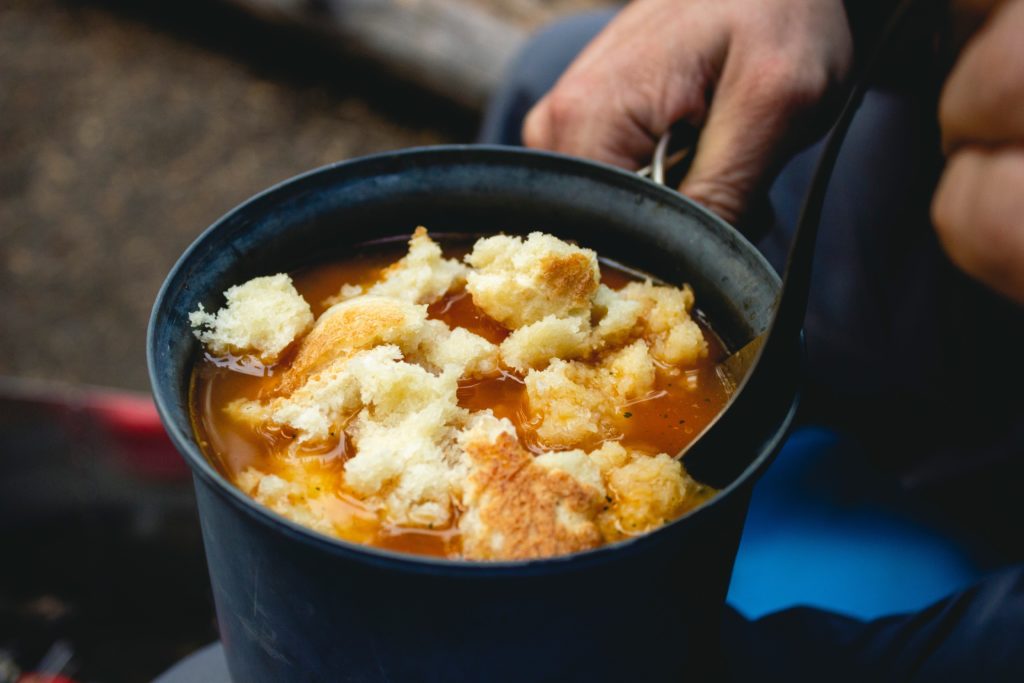
In an emergency, food is actually pretty far down the list of necessities. The average person can go weeks without food. But in a disaster you are likely to be working harder and doing more than you normally would. You’ll probably get irritated and fatigued easily in an emergency, so you should make food an important part of your emergency plan.
When picking what food to put in your emergency kit, you should choose food that’s lightweight, shelf stable, and as well balanced nutritionally as possible. Another consideration, especially when involving children, is to make sure it is something that you are willing to eat. The last thing in a disaster that you want is food that is unappealing to eat.
Here are some food options that we recommend:
MREs
Consider Meals Ready to Eat (MRE’s). These were originally used for military applications. Previously, the only way to get them was from military surplus or speciality stores. However, most of the MREs you see today maintain the same look and feel, but are not from military overstock. A number of companies now make MRE meals for camping, hiking, and emergency preparedness. There is a large variety of meals, side dishes, and even desserts to choose from.
Advantages
MREs are shelf stable at room temperature for 5+ years. Typically they come in a foil lined pouch that you simply heat by using a MRE heater or by placing in a pot of hot water. Wait a few minutes, tear off the top and eat straight from the package. They are very convenient, have a good variety and are safe to consume.
Disadvantages
Most MREs were designed for soldiers in combat and calorie count can be high. They weigh more than freeze-dried meals and can be expensive compared to fresher foods and some freeze-dried options. Some people may not like the taste of MREs.
Freeze Dried Meals
Another option is freeze dried meals.
Advantages
Freeze dried meals weigh very little and you can pack a lot in a much smaller space. Freeze drying also retains nutritional value better than most other preservation methods and often the process preserves the actual color and shape of the original food. Most freeze dried products are shelf stable for as long as 25 years depending on the packaging and storage environment.
Disadvantages
Water is required for reconstituting freeze-dried meals. You will need to include extra water to account for your meals. Some products are great once reconstituted. Others – not so much. Some people dislike the dry, styrofoam-like texture that many freeze dried food take on.
A Few Extras
In addition to the commercial options there are a number of things you can add to your kit that will make life more enjoyable, should the worst ever happen. For example, you can add items such fruit cups, granola bars, instant oatmeal, a bag of hard candy, and a pack of gum. These will need to be rotated out more often, but that little extra goes a long way when stuck in a shelter or working hard on cleanup of a home after a disaster.
Don’t forget about your pets. We store three days’ supply of food and water in a kit for our family dog. She has her own pack and is responsible to carry all her own supplies.
What food you put in your 72 hour kit is personal. For our family, we tried a variety of MREs, made a list of the ones we liked, the ones we did not like, and the ones we would rather starve than eat. We try to purchase only the ones we like. We found we did not like any of the breakfast items in any MREs, so we use freeze-dried breakfast items like the scrambled eggs that we found acceptable. We added to our kits some fruit cups, granola bars, instant oatmeal, and a small supply of candy. I might have snuck in a bag or two of beef jerky.
We go through our packs every 6 months and rotate out the food that needs it. Typically the freeze dried and MREs rotate out every 3 – 4 years and the rest every six months. You should also figure out what food options work best for your family.





